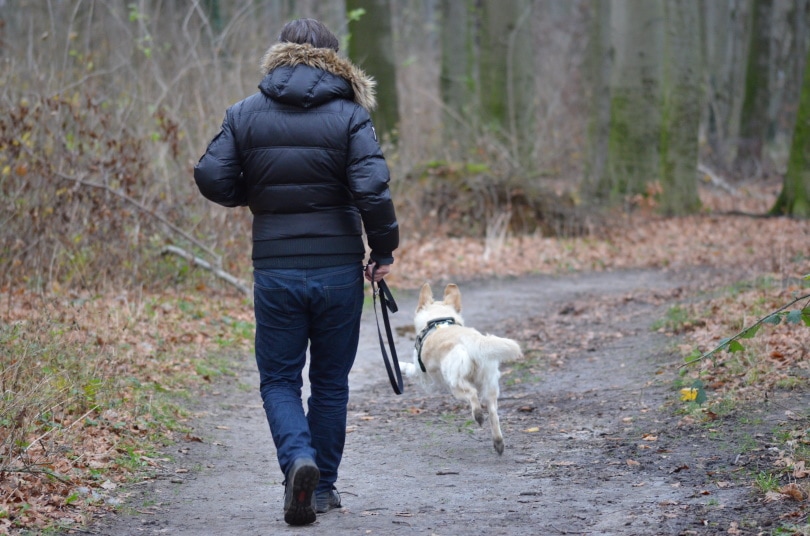How Long Do Irish Setters Live? Vet Reviewed Average Lifespan, Data & Care
By Adam Mann
Updated on

Click to Skip Ahead
Whether you’re thinking about bringing an Irish Setter home or you already have one of these adorable pups, it’s only natural to wonder how long they typically live and what to expect. That’s why we came up with this guide that breaks down everything you need to know. Not only that but we also highlighted a few tips for keeping your pup happy and healthy, giving them the longest life possible!
Irish Setter Average Lifespan
Even though how you care for an Irish Setter and their specific genetics will play a large role in how long they’ll live, the average Irish Setter lives between 12 and 15 years. Of course, some Irish Setters will have shorter or longer lifespans, but this still gives you a good idea of what to expect.

How to Care for Your Irish Setter for a Long Lifespan?
How you care for your Irish Setter isn’t the only factor that affects how long they’ll live, but it does make a huge difference.
Feeding & Diet
Just like your diet plays a huge role in how long you’ll live, it’s a big factor for your dog too. Not only is it best to keep unhealthy or toxic human foods away from them, but you also want to feed them a high-quality, complete and balanced diet. Feed a food approved by the Association of American Feed Control Officials.

Environment
Environmental factors can play a big role in how long your pup will live. Keeping your dog safe in an enclosed yard and keeping them a healthy weight with regular exercise will help. Getting regular veterinary check ups, vaccinations and parasite control can help your Irish Setter stay happy and healthy, and it can also help you catch small issues before they have a chance to turn into big ones. Not only that but once you catch the issue, having enough money or adequate pet insurance ensures you can afford to treat it.
Grooming
Grooming is a crucial part of owning a pet. Irish Setters have long hair, and to keep it looking glossy and clean, a regular grooming routine is essential. You should brush their coats daily, or at least two to three times a week at the very minimum. Brushing helps mats, which can be painful to remove later. On top of that, be sure to check their ears weekly and clean as needed. Don’t forget to keep their toenails trimmed as well. If you can hear them clicking on the floors when they walk, it’s time to trim them. Dental care such as teeth brushing or dental chews should also be part of your at-home care routine.

The 4 Life Stages of an Irish Setter
The Irish Setter is like most other dogs in that it has four distinct life stages, but when do they go through each stage, and what can you expect?
1. Puppy
The puppy stage is the first life stage an Irish Setter has, lasting from birth to about 9 months old. During this stage, the Irish Setter has loads of energy and is dependent on their owners. Typically, these puppies follow their owners around all the time and can’t get enough attention.

2. Adolescent
The adolescent stage is just after the puppy stage and is also known as the adolescent stage. During this stage, they can get a bit more independent, and they’ll often start pushing boundaries a bit more, just like a teenage human! This stage usually starts around 9 months and stops when they’re about 18 months old.
3. Adult
The adult stage is the life stage that makes up most of your Irish Setter’s life and usually starts around the 18-month mark. At this point, they’re not quite as stubborn, and they settle into a typical routine. With proper training, caring for them gets even easier.

4. Senior
The senior stage is the last life stage for your Irish Setter, and it generally starts around the 8 to 9-year mark. During this life stage, the Irish Setter starts to slow down and go gray. Senior dogs may develop some hearing or vision loss. They are more prone to diseases such as dental disease, arthritis and cancers. Your senior dog will need some extra special care and attention to keep them comfortable.
How to Tell Your Irish Setter’s Age
The best way to tell your dog’s age is to look at their microchipping or breed paperwork from when you purchased them. If this is not available, you can try to estimate their age but this is very imprecise. It’s not always the easiest to tell a pup’s age if you don’t already know what to look for at each stage, which is why we recommend taking them to the vet for an estimate. However, some classic things to help you determine their age include looking at their teeth to see if they have all their adult teeth, as well as looking for staining or tartar build-up but keep in mind that only a very rough estimate can be given once their adult teeth are present, as all dogs age differently.
You can also look for gray hairs, cloudy eyes, and at their paw pads to help determine their age. may develop some hearing or vision loss. They are more prone to diseases such as dental disease, arthritis and cancers. Your senior dog will need some extra special care and attention to keep them comfortable.
Conclusion
Now that you know a little more about how long you can expect your Irish Setter to live and what to do to care for them, all that’s left is for you to set aside enough time and money to care for them throughout their entire life. They’re excellent dogs and extremely loving, so the more you can do to keep them happy and healthy, the happier everyone will be!
Featured Image Credit: Reddogs, Shutterstock













